I had never heard of John Henry before this class. As I read the articles about his legend, much of the mythology and language surrounding him was completely new to me. I did find a simple sentiment which resonated with me, and seemed familiar. The longer I read and listened and watched, the more John Henry’s story and song reminded me of a song I have known for a long time.

When I was younger, I got myself a record player. The first record I bought for myself was a Joan Baez album. It featured old folk songs, rendered beautifully in her soprano voice. One song on the album that always stood out to me was “Engine 143.” The song is about a train wreck tragedy, and based upon a real event. After doing the readings for the week I revisited it and researched it. Much to my surprise, one of the first lyrics references the C & O Railroad, the very same company John Henry worked for.
Here are the lyrics in full:
Along came the FFV the swiftest on the line
Running o’er the C and O road just twenty minutes behind
Running into Sou’ville headquarters on the line
Receiving their strict orders from a station just behind
Georgie’s mother came to him with a bucket on her arm
Saying my darling son be careful how you run
For many a man has lost his life in trying to make lost time
And if you run your engine right you’ll get there just on time
Up the road he darted against the rocks he crushed
Upside down the engine turned and Georgie’s breast did smash
His head lay against the firebox door the flames are rolling high
I’m proud to be born for an engineer to die on the C&O road
The doctor said to Georgie my darling boy be still
Your life may yet be saved if it is God’s blessed will
Oh no said George that will not do I want to die so free
I want to die for the engine I love one hundred and forty three
The doctor said to Georgie your life cannot be saved
Murdered upon a railroad and laid in a lonesome grave
His face was covered up with blood his eyes they could not see
And the very last words poor Georgie cried was nearer my God to thee[1]
https://www.youtube.com/watch?v=8CHSv4-wpxM
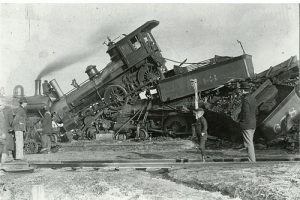 What always surprised me was the tone of the song. I found it to be rather cheery, despite the horrific event it was based upon. The parallels between this song and the story of John Henry are manifold. It addresses the breakneck pace of innovation, and the consequences of trying to keep up with it. Both myths feature a cautioning woman, Georgie’s mother and Henry’s wife[2], whose warnings are not heeded. Like John Henry, Georgie faces a tragic yet virtuous death.[3] And like in John Henry’s story, the railroad company (the very same C & O) is not cast as a villain, although they directly cause the hero’s death by pushing him too far. Perhaps more so in “Engine 143,” C & O- and by extension progress itself- is declared to be a cause worth dying for.
What always surprised me was the tone of the song. I found it to be rather cheery, despite the horrific event it was based upon. The parallels between this song and the story of John Henry are manifold. It addresses the breakneck pace of innovation, and the consequences of trying to keep up with it. Both myths feature a cautioning woman, Georgie’s mother and Henry’s wife[2], whose warnings are not heeded. Like John Henry, Georgie faces a tragic yet virtuous death.[3] And like in John Henry’s story, the railroad company (the very same C & O) is not cast as a villain, although they directly cause the hero’s death by pushing him too far. Perhaps more so in “Engine 143,” C & O- and by extension progress itself- is declared to be a cause worth dying for.
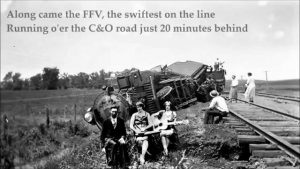 Further research revealed that the “train wreck” song is something of an American icon in itself.[4] One article listed the ways in which the train itself has deeply affected many of our American idioms. Phrases such as sidetracked, derailed, train of thought, hell on wheels, blowing their stack, right/wrong side of the tracks, are all direct references to trains.[5] The article went on to list a multitude of folk songs influenced by trains, including a list of train disasters. Such songs as “Casey’s Song” and “The Wreck of Old ‘97” both deal with train-related tragedies. “Casey’s Song” lyrics in particular sound so similar to “Engine 143” that I thought it was about the same disaster.[6]
Further research revealed that the “train wreck” song is something of an American icon in itself.[4] One article listed the ways in which the train itself has deeply affected many of our American idioms. Phrases such as sidetracked, derailed, train of thought, hell on wheels, blowing their stack, right/wrong side of the tracks, are all direct references to trains.[5] The article went on to list a multitude of folk songs influenced by trains, including a list of train disasters. Such songs as “Casey’s Song” and “The Wreck of Old ‘97” both deal with train-related tragedies. “Casey’s Song” lyrics in particular sound so similar to “Engine 143” that I thought it was about the same disaster.[6]
These songs reveal American virtues. As we discussed in class, the obsession with progress, hard work, and innovation are especially prevalent. These songs could serve as a warning about progress, greedy corporations, overexertion, etc., but instead they have become a way to enforce these virtues. John Henry is directly compared to a biblical hero,[7] and Georgie meets God at the end of “Engine 143.” These virtues most certainly have a darker side. Perhaps these songs and myths could be used to expose them, and not simply as a motivational story as in Disney’s John Henry.
[1] https://www.azlyrics.com/lyrics/joanbaez/engine143.html
[2] Disney, “John Henry,” (Walt Disney Animation Studios, 2000).
[3] Scott Nelson, “Who Was John Henry?” (Oxford University Press, 2006).
[4] https://en.wikipedia.org/wiki/Engine_One-Forty-Three
[5] Stephanie Hall, “The Folklore and Folksong of Trains in America, Part Two” (Library of Congress, 2015). https://blogs.loc.gov/folklife/2015/08/folklore-of-trains-in-usa-part-two/.
[6] Ibid.
[7] Scott Nelson, “Who Was John Henry?” (Oxford University Press, 2006).
![]() The moment I thought to write about the Statue of Liberty as a strong female icon, I immediately found some depiction of her deep in the abyss of my television knowledge. The animated Netflix show, Big Mouth, follows the exploits of young teens trying to navigate the art of becoming an adult. In the second episode of the series, the kids take a field trip to the Statue of Liberty, where Jessi gets her first period. The Statue of Liberty takes Jessi into her hands and gives her the harsh facts about being a women in today’s society.
The moment I thought to write about the Statue of Liberty as a strong female icon, I immediately found some depiction of her deep in the abyss of my television knowledge. The animated Netflix show, Big Mouth, follows the exploits of young teens trying to navigate the art of becoming an adult. In the second episode of the series, the kids take a field trip to the Statue of Liberty, where Jessi gets her first period. The Statue of Liberty takes Jessi into her hands and gives her the harsh facts about being a women in today’s society.

 Photo from http://www.intanibase.com/shorts.aspx?shortID=713#page=general_info
Photo from http://www.intanibase.com/shorts.aspx?shortID=713#page=general_info

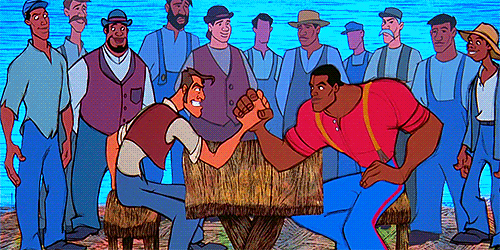

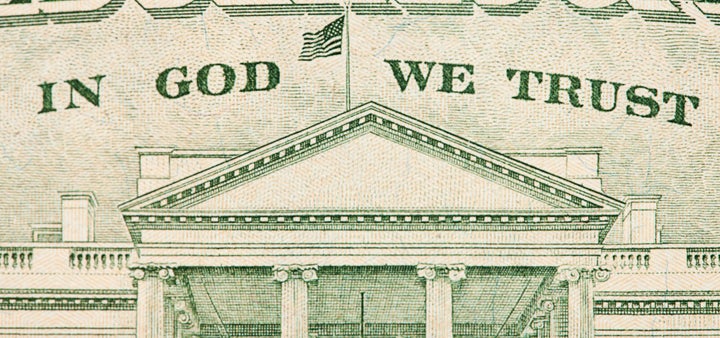

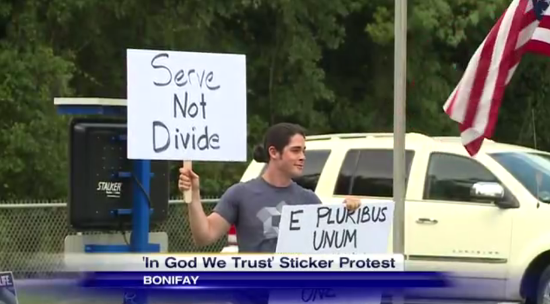



 both the good and bad histories of the Liberty Bell. The Grand Canyon represents wonder, freedom, and the adventurous spirit of the United States. Often called “The Great Unknown”, the Grand Canyon was a literal blank spot on the map until Joseph Christmas Ives sailed up the Colorado River in search of a trade route to the West. The mapping and “discovery” of the canyon is an example of the adventurous spirit of Americans and the beauty of exploration.
both the good and bad histories of the Liberty Bell. The Grand Canyon represents wonder, freedom, and the adventurous spirit of the United States. Often called “The Great Unknown”, the Grand Canyon was a literal blank spot on the map until Joseph Christmas Ives sailed up the Colorado River in search of a trade route to the West. The mapping and “discovery” of the canyon is an example of the adventurous spirit of Americans and the beauty of exploration.
